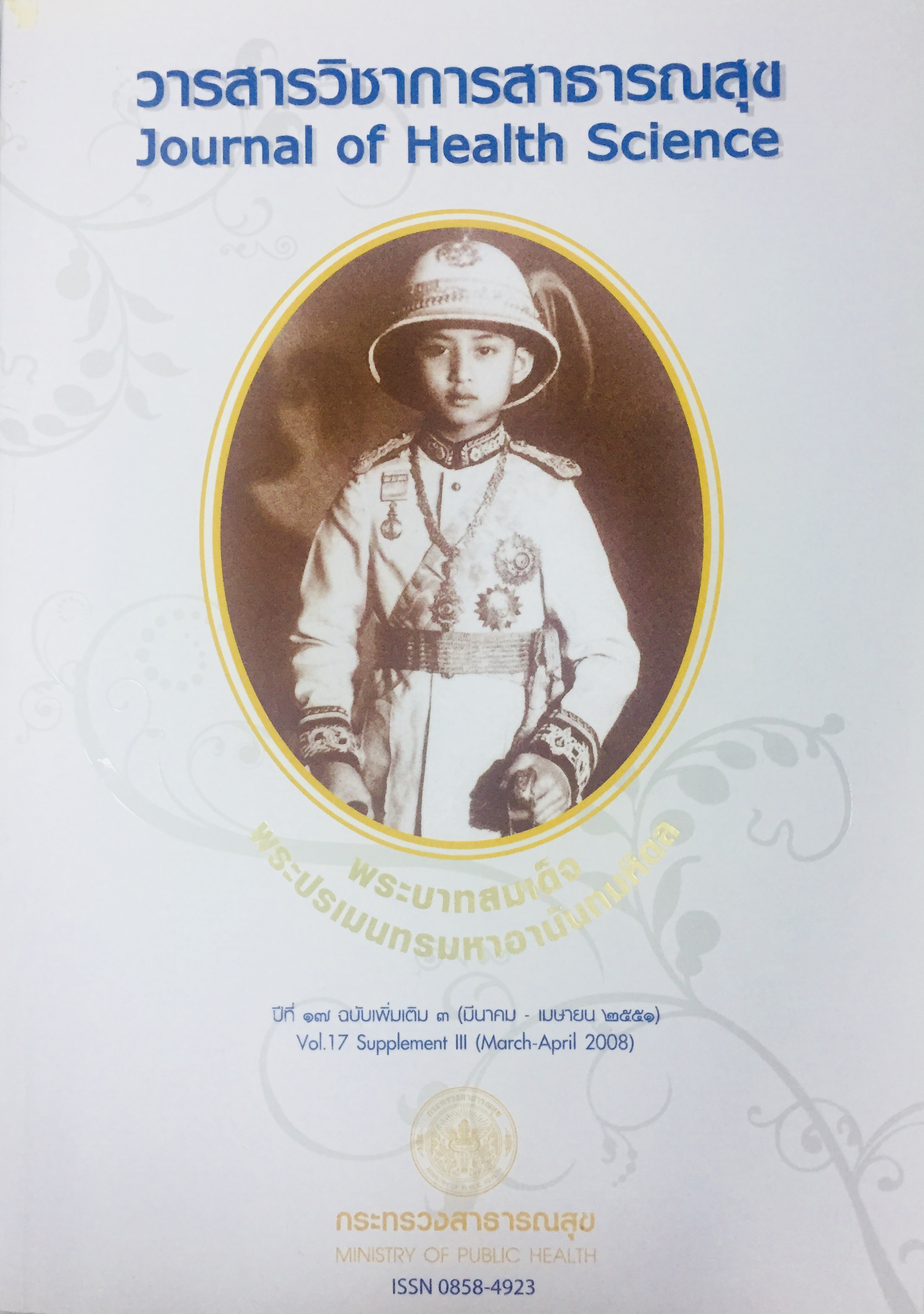The Treatment of Paraquat Poisoning by Thunbergia Laurifolia Linn
Keywords:
paraquat, Thunbergia laurifolia Linn., suicideAbstract
Paraquat is a widely used herbicide with a good safety record when used properly. Most casesof paraquat poisoning result from suicidal ingestion. There is a high mortality rate of 60 - 100percent associated with it. Many attempts to reduce mortality have met with varying results anddisappointment. In this study 57 patients with paraquat poisoning were treated by Fuller’s earth,ascorbic acid, corticosteroid, forced diuresis, and boiled water of Thunbergia laurifoliaLinn. Theoverall mortality was 47.4 percent. The amount of paraquat ingested was higher in fatal cases.(92.4,SD 13.3 ml vs 17.4 ,15.4 ml, p = 0.007). There was no difference in time before treatmentbetween the patients who survived and those who died (82.5, SD 57.1 min. vs 67.7, SD 75.7 min, p= 0.43). The significant predictors for fatality included the amount of paraquat ingested, leukocyto-sis, hepatitis, acute renal failure, respiratory failure, proteinuria and positive urine paraquat test.Subgroup analysis revealed that there were 24 patients with moderate to severe paraquat poisoning.Compared to the control group of Lin, J.L. et al series who had the same level of severity, themortality rate in this study was lower (37.5% vs. 57.1%). Therefore it was primarily concluded thatusing the boiled water of Thunbergia LaurifoliaLinn. may be beneficial in treatment of paraquatpoisoning and it may help reduce mortality rate, especially in the moderate to severe group.
Downloads
Downloads
Published
How to Cite
Issue
Section
License
Copyright (c) 2018 Journal of Health Science

This work is licensed under a Creative Commons Attribution-NonCommercial-NoDerivatives 4.0 International License.







